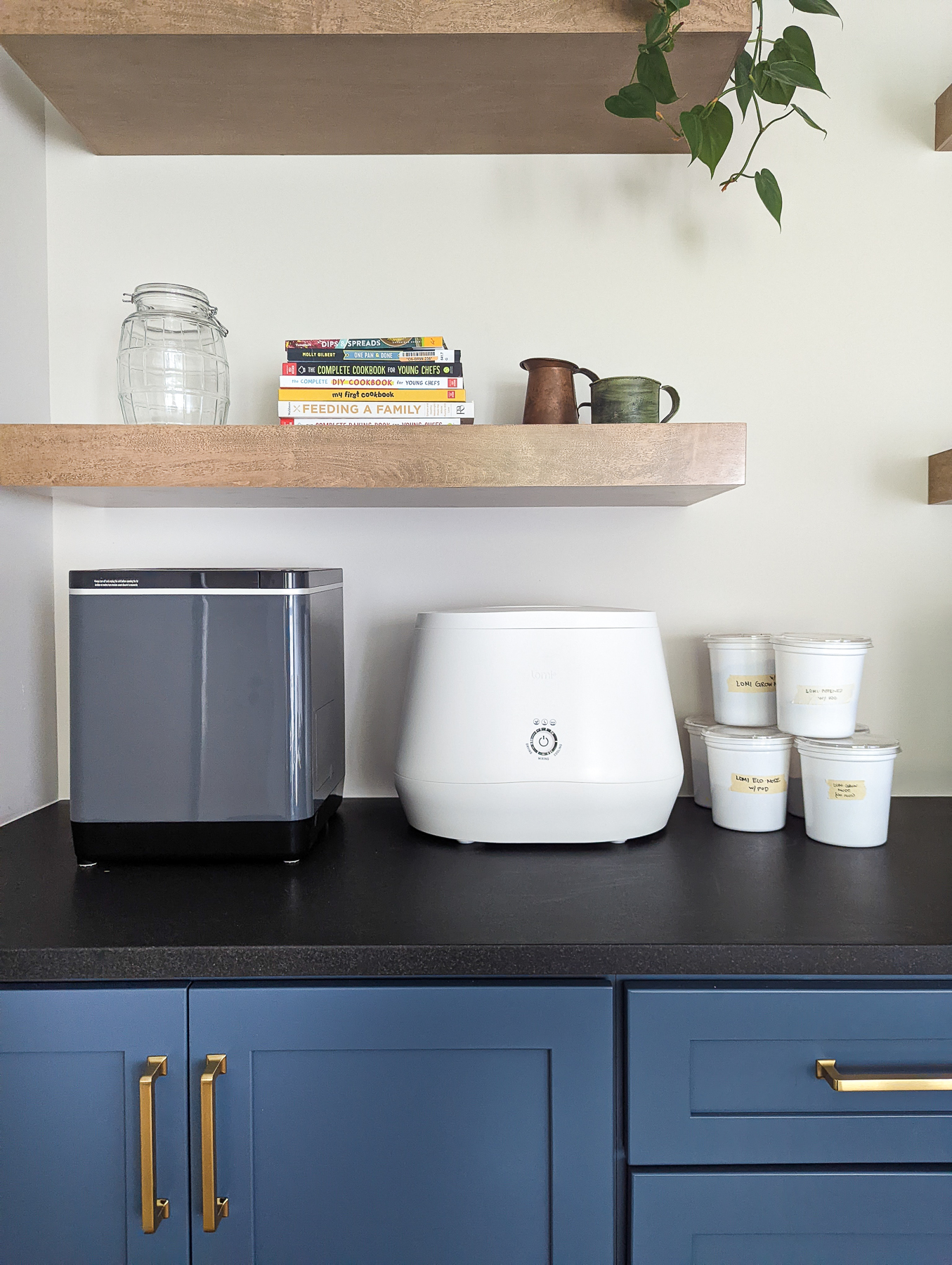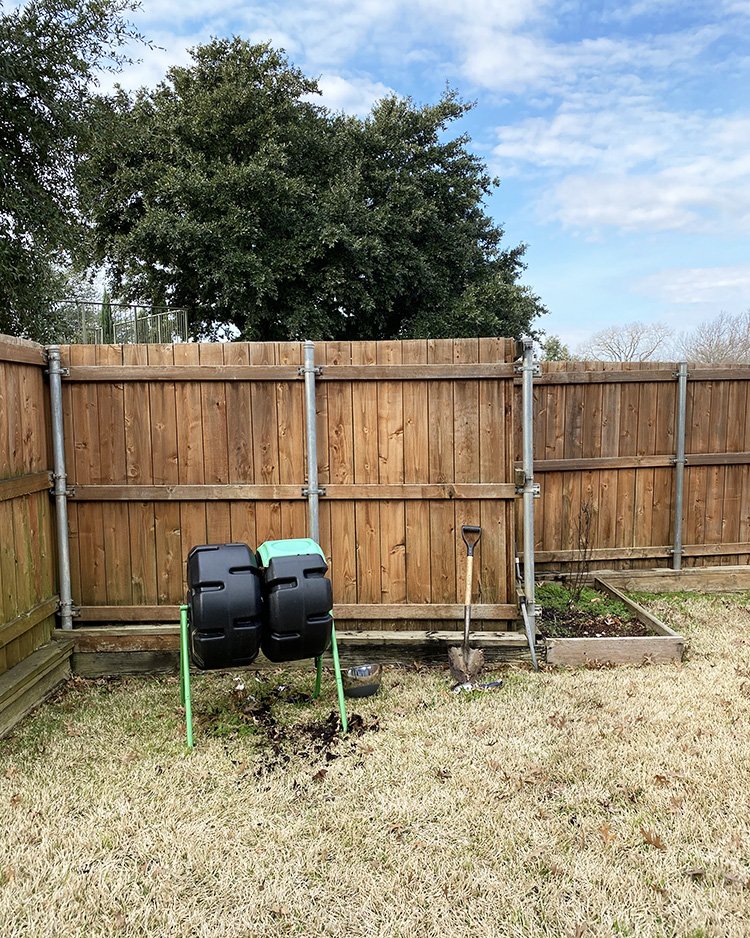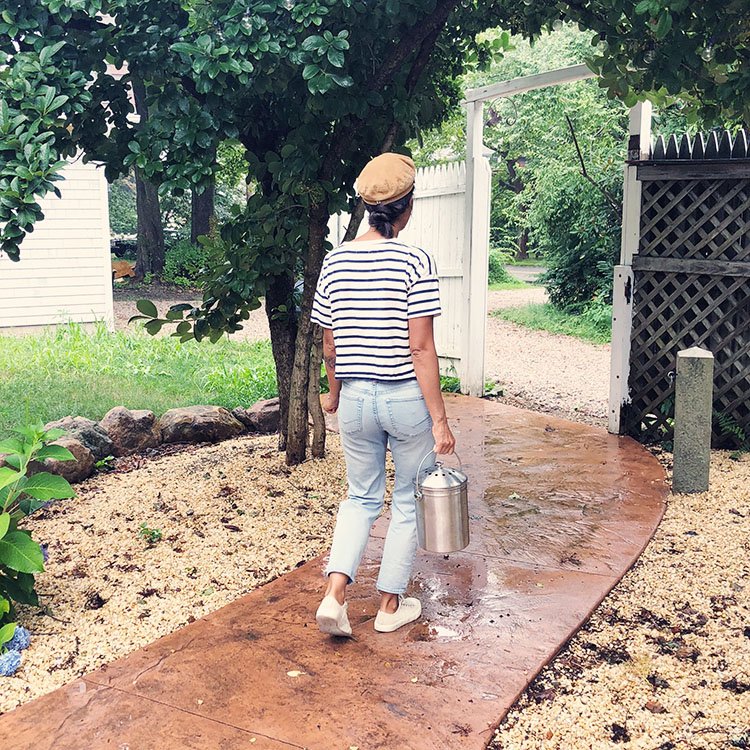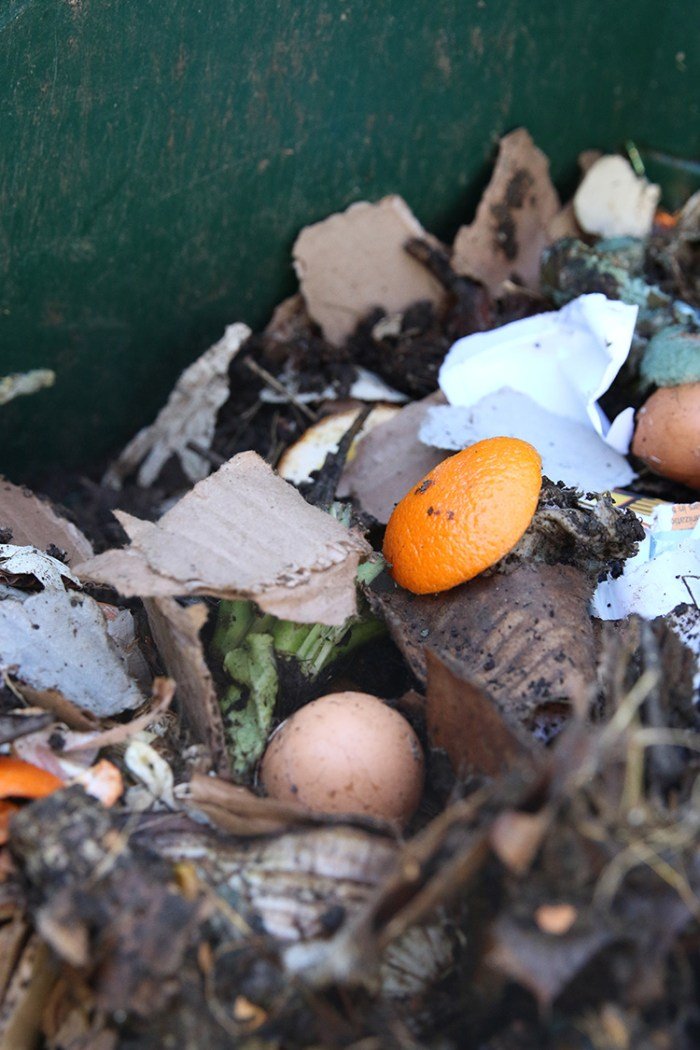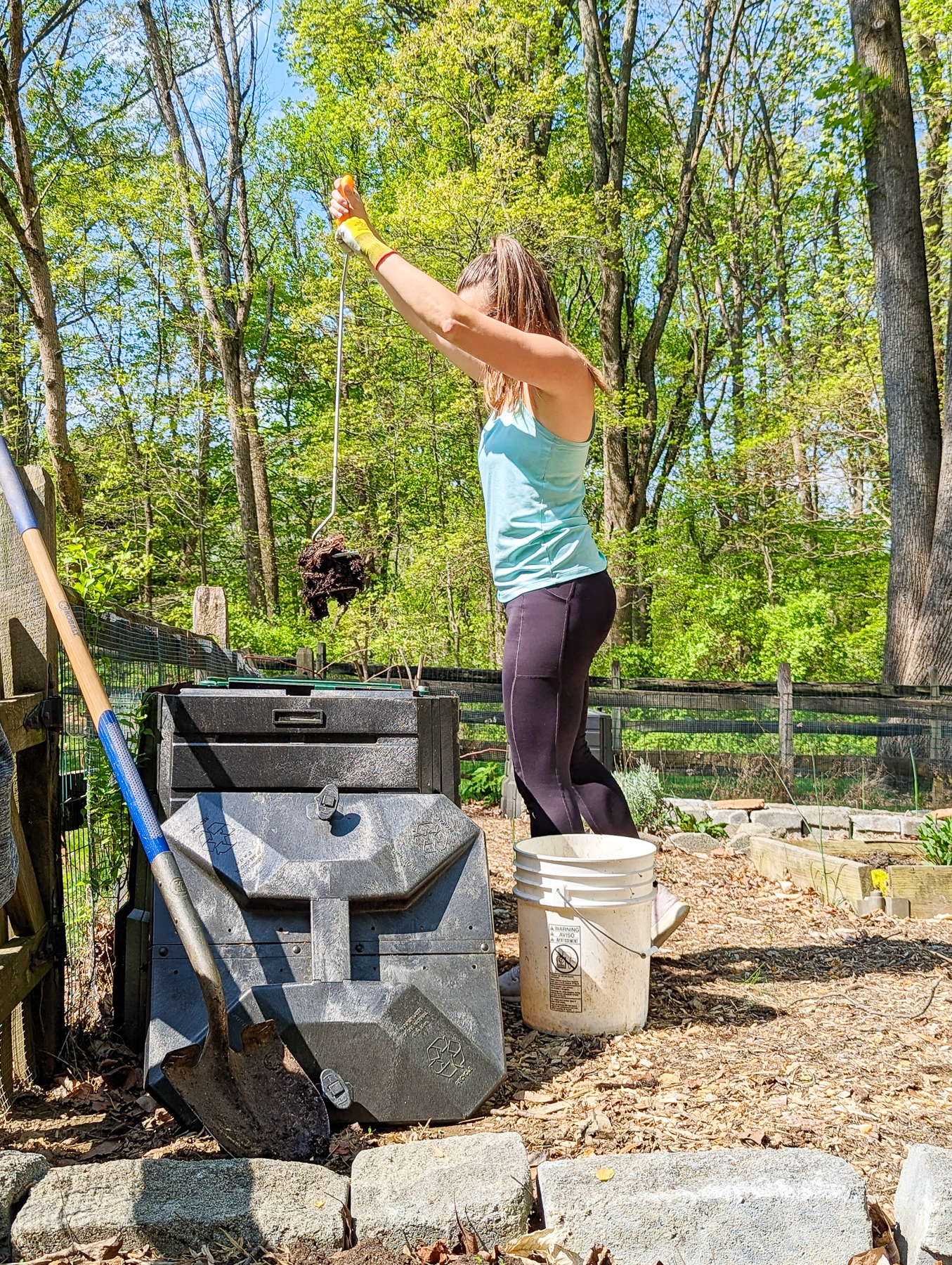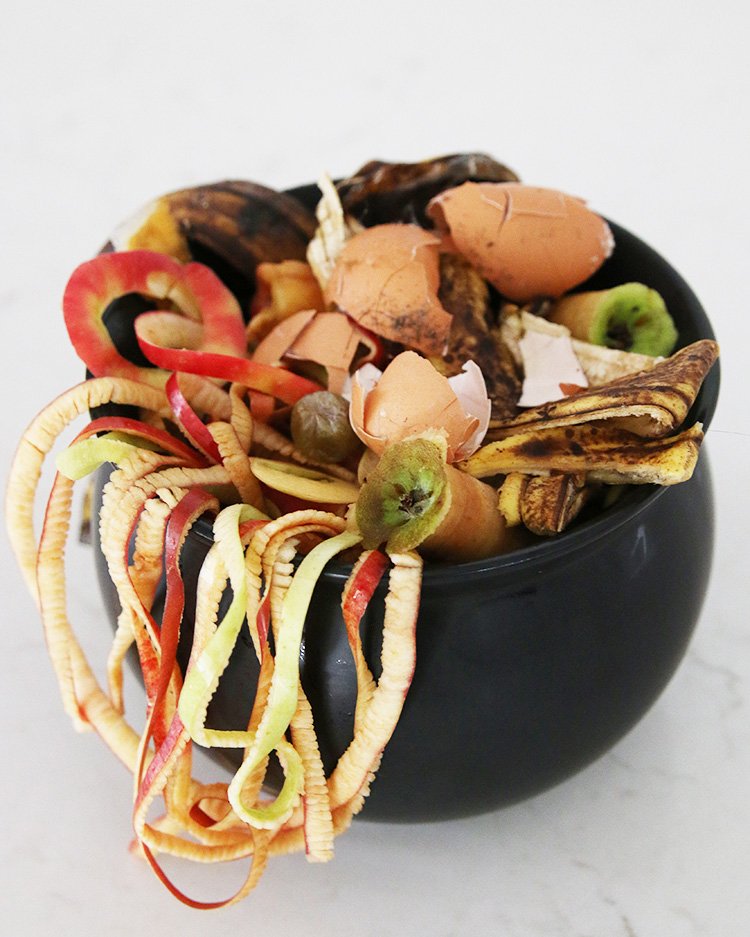8 Easy Tips for Better Composting in Summer and Hot Weather
Wondering if you need to employ any special techniques to manage your compost bin in the heat? Read on to learn some basic tips for betting composting in summer and hot weather.

The calendar says September and school is back in session, but the summer is still in full swing according to the temperatures. This week, we’re looking at high heat for several days, and I suspect lots of places are still experiencing warm weather despite the change in marketing seasons.
Since our compost bins don’t care if the nearby coffee joint is serving pumpkin spice lattes or if the big box store has Halloween candy on display yet, I think we’ve got plenty of warm weather left to talk about managing a compost bin in summer or otherwise hot weather.
Composting during the summer or warm weather requires some additional attention to ensure optimal conditions for decomposition. The heat has some benefits; it often speeds up the decomposition process and gives us the precious black gold sooner than in other seasons. But it can also make for a pretty stinky or slimy bin if we don’t manage it with a little bit of care. Here are some tips for successful composting in summer and hot weather.
Tips for Better Composting in Summer and Hot Weather
Moisture management of the compost pile
Warm weather can dry out the compost pile quickly, especially if you live in an arid climate, so it’s important to maintain adequate moisture levels. The pile needs the right amount of moisture to ensure proper conditions for the microbes and other organisms that break down all the food scraps to thrive.
Check the moisture level of the compost pile periodically, and aim for a damp but not soggy consistency. If the compost pile becomes too dry, it will slow down decomposition. Consider using a hose or sprinkler to water the pile evenly. If the pile is too wet, it will become smelly and soggy and decomposition will slow down in these conditions as well.
Check out this in-depth post about how and when to water your compost pile. Whether or not it’s required will depend a lot on what organic materials you add to the pile as well as the weather and climate where you live.

Balance carbon and nitrogen in the compost pile
Maintaining the right balance of carbon-rich “browns” (such as dried leaves, straw, or shredded paper) and nitrogen-rich “greens” (like kitchen scraps, yard wastes, fresh grass clippings, or plant trimmings) is essential for composting no matter the weather. In hot weather, however, the decomposition process typically speeds up, meaning that a pile with too much brown material or too many green materials can become imbalanced more quickly.
Ensuring a proper mix of browns and greens throughout the decomposition process will prevent odors and promote balanced breakdown. Because the pile tends to change more quickly in the summer, check it more frequently than you might in cooler seasons and add browns or greens as needed.
You can check out this article What Is The Right Ratio of Greens and Browns For Composting At Home? for more details about how to know if you have the right ratio and when to know what ingredients to add to your compost pile.
Chop or shred materials before composting
Breaking down organic matter into small pieces accelerates the composting process because it exposes more surface area to the microorganisms and critters doing the hard work of decomposition. Chop or shred large or woody materials before adding them to the pile to help the compost pile stay balanced, break down more evenly, and ensure adequate airflow throughout the pile.
If you’re feeling motivated, you can chop up vegetable scraps, fruit peels, and other food waste into smaller pieces before adding them to your bin to help expedite the composting process. Some people even put food scraps through a food processor before composting to really speed up the process and get to that black gold.
This will help the green and brown materials mix more easily, but it’s also not required. It’s an extra step that can be beneficial but definitely isn’t necessarily to have a healthy and functional compost pile.
Turn the compost pile regularly
Regularly turning the compost pile aerates it (i.e. adds oxygen), helps mix the organic materials, and promotes faster decomposition. In hot weather, you can turn the compost pile as often as you’d like, though turning it every week or two will likely be a good cadence.
If you turn it too frequently, the compost pile may not get hot enough to kill off pathogens and provide the right conditions for certain phases of decomposition. If you don’t turn it often enough, you might end up with a pile that gets dry or isn’t balanced throughout. Turning the pile allows for the redistribution of heat and moisture, preventing the compost (or even just certain parts of it) from becoming too hot or too dry.

Provide shade for your compost pile
Excessive exposure to direct sunlight can cause the compost pile to dry out rapidly, particularly in hot weather. Consider placing the compost bin or pile in a partially shaded area to provide some protection from the intense sun. This can help regulate moisture levels and prevent overheating.
If your compost piles are covered or in enclosed bins, the relative shade of a particular location may not be as important. But especially if you’re managing an open pile, a bit of shade in the hot summer months can help prevent the pile from getting too hot and dry.
As you might expect, there are some additional things to consider when determining where to put your compost pile and how much sun is beneficial. We go a bit deeper on whether a compost pile should be in the sun or shade in this post. Check it out to learn more.
Increase aeration of the compost bin
Good airflow is crucial for composting. Just like we need oxygen to breathe, so do many of the microorganisms that break down all the food scraps and yard waste in your bin.
In hot weather (or any weather really), there are a few ways to ensure adequate aeration in a compost bin or container. You can use some or all of these tips and techniques to ensure your compost bin has plenty of oxygen and aeration at all times.
- Use a compost bin with aeration: Some compost bins or systems are designed with built-in aeration features, such as ventilation holes or tumbling mechanisms. Consider using one of these systems to facilitate proper aeration.
- Layer materials properly: Alternate layers of carbon-rich “browns” (e.g., dried leaves, straw, shredded paper, wood chips) with nitrogen-rich “greens” (e.g., kitchen scraps, grass clippings, plant materials/garden waste, coffee grounds) as you build your compost pile. This layering promotes airflow by creating air pockets between the materials.
- Use aeration tools: Occasionally use a garden fork or compost aerator to create air channels within the pile. This spiral aerator is my favorite and the most effective one I’ve tried, and I’m pretty sure that any brand that uses a similar shape will work well.
- Avoid overfilling: Overfilling your compost bin or pile can reduce airflow as items get too compacted together and there is limited space for airflow. Ensure that there’s enough space in your compost container or pile for materials to mix and breathe. If your compost bin gets too full, start a new pile or empty it more frequently.
- Add coarse materials: Incorporate coarse materials like small branches or woody prunings into your compost pile. These materials create natural channels for air to flow through, improving aeration. It’s worth noting that these larger items break down very slowly. You may need to sift them out of the pile when the rest of the compost pile is ready for harvesting and use. But they can be beneficial for aeration during the decomposition phase.
- Monitor moisture levels: Excess moisture can reduce aeration and lead to a slimy, anaerobic compost pile that is too wet to allow proper airflow. Ensure that your compost pile is moist but not overly wet. If it becomes too soggy, add dry brown materials to absorb excess moisture. You can read more about proper moisture levels above.
- Add bulking agents: Bulking agents like straw, shredded cardboard, or shredded newspaper can create air pockets within the pile, enhancing aeration. Incorporate them when you add fresh materials to the compost.
Use high-carbon materials as a cover for your compost pile.
In hot weather, compost piles (especially those with lots of food scraps) can become great breeding grounds for flies and other bugs if they aren’t managed well. Flies and other bugs aren’t necessarily bad for bins (the larvae really help break down the food scraps) but they can be kind of gross if that’s a problem for you.
Covering the compost pile with a layer of high-carbon dry material, such as straw, shredded paper, or wood chips, can help regulate moisture levels and prevent excessive heat buildup. It also acts as a physical barrier to contain odors and discourage flies. Flies tend to lay their eggs directly on food scraps, so if those scraps are covered by carbon-rich materials, you’ll have fewer problems with swarms of bugs hanging out around your bin.
On a side note, animals and insects don’t really love coffee grounds. I often find that a layer of coffee grounds on top of the pile really helps to limit the insect infestations and dryness of the pile. The coffee grounds deter pests while the moisture in the coffee grounds help offset dryness in the bin.
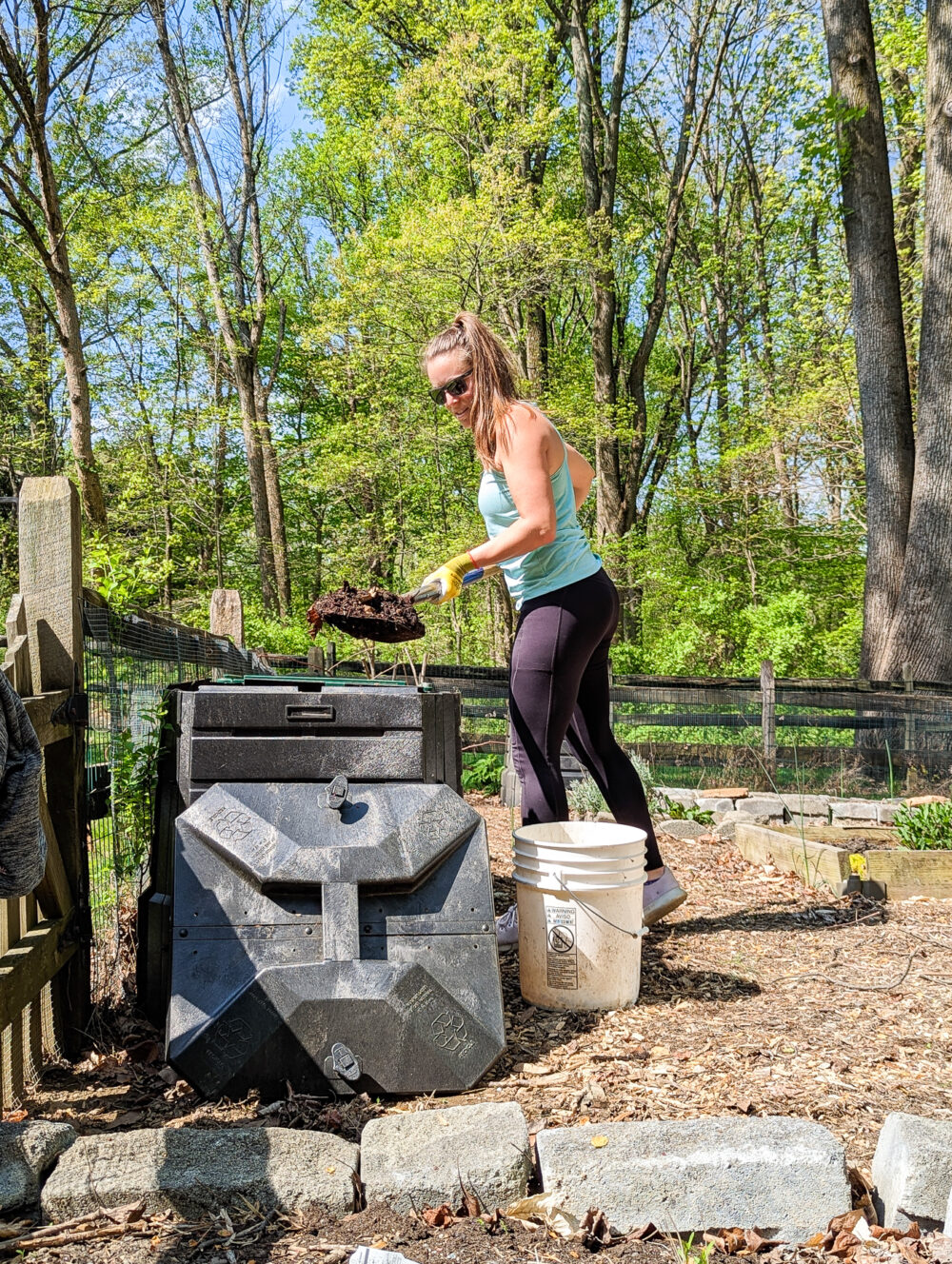
Managing a compost bin during the summer isn’t hard. In fact, I think it’s easier because the summer heat does a lot of the work for you and makes the decomposition process quite a bit faster. But the tips above can help you ensure the compost pile is well-hydrated, balanced, and free of major insect infestations.
Do you have any other tips for better composting in summer and hot weather? If so, be sure to share them in the comments!
If you like this post about composting in summer, you might also like
8 Simple Tips to Manage a Countertop Compost Bin in the Summer
How To Know Where To Place Your Compost Bin

Jen Panaro
Jen Panaro, founder and editor-in-chief of Honestly Modern, is a self-proclaimed composting nerd and advocate for sustainable living for modern families. To find her latest work, subscribe to her newsletter, Stepping Stones.
In her spare time, she’s a serial library book borrower, a messy gardener, and a mom of two boys who spends a lot of time in hockey rinks and on baseball fields.
You can find more of her work at Raising Global Kidizens, an online space to help parents and caregivers raise the next generation of responsible global citizens.

